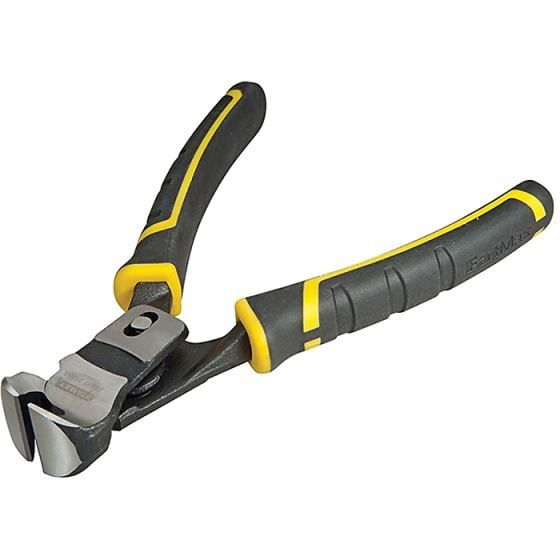Top 10 Uses of Gripping Pliers in Everyday Work
1. Knowing Gripping Pliers: Why They're the Must-Haves
Gripping pliers are handy tools provided with a lock, which helps fix firmly on an object. This facilitates gripping stability for applications in most repairs, such as pipe holding during repairs and tightening bolts loose or vice versa. They surpass most other pliers at the work that requires max stability.
Key Features of Gripping Pliers:
Locking Mechanism: Ensures that the jaws are closed tightly without hand pressure throughout.
Adjustable Jaws: Accommodates objects of different sizes.
Durability: Built with high-grade materials to sustain heavy-duty use.
2. Effortless Wire Handling: Stripping, Bending, and Cutting
Gripping pliers are perfect for electrical jobs, especially when dealing with wires. The firm grip ensures that stripping insulation, bending wires into the desired shapes, or cutting through them cleanly is done with precision and control. That is why gripping pliers are the first tool electricians and hobbyists reach for.
Applications:
Stripping insulation without damaging the wire.
Bending wires to fit into tight spaces.
Cutting wires cleanly and efficiently.
3. Securing Fasteners: The Role of Gripping Pliers in Tightening and Loosening
Bolts or nuts and screws that are either stuck or hard to turn provide the extra twisting force to succeed with gripping pliers. Its tight grip eliminates slippage and ensures good fastener tightening or loosening.
Advantages:
It provides additional torque for stubborn fasteners.
Prevents damage on fasteners with precise gripping.
Best suited for automotive repairs and mechanical jobs.
4. Innovative Uses: How Gripping Pliers Assist in DIY Activities
For the do-it-yourself enthusiast, gripping pliers are an all-around multipurpose tool that can adapt to many tasks. From holding pieces of material in place until glue dries to clamping objects for drilling or cutting, these pliers make complicated projects seem simple and increase precision.
Examples:
Material Clamping during Woodwork
Holding Objects in place for crafting or painting
Temporal Vise for small-scale projects
5. Safety and Efficiency: Tips to Use Gripping Pliers on Daily Tasks
Using gripping pliers
Using gripping pliers is not as complicated as it may seem, requiring a few easy techniques to safely and effectively get the job done:
Tips:
Adjust Properly: Use the adjustment screw to set the jaws for a snug fit.
Secure the Lock: Engage the locking mechanism firmly to prevent slippage.
Choose the Right Size: Use pliers suited to the object's size for better control.
Release with Care: Disengage the lock gently to avoid sudden movements.
By following these guidelines, you maximize the efficiency of gripping pliers and minimize accident risks.
Conclusion
Gripping pliers are an all-around indispensable tool for professionals and hobbyists across various fields. From electrical work and automotive repairs to DIY projects, their ability to securely hold and manipulate objects makes them a must-have in every toolbox. With their locking mechanism and adjustable jaws, gripping pliers offer unparalleled convenience and precision.
Whether you’re an electrician, mechanic, or DIY enthusiast, investing in high-quality gripping pliers will ensure that your tasks are completed efficiently and safely.
FAQs
Q1. What are gripping pliers used for?
Gripping pliers are used for holding, clamping, and manipulating objects securely. They are ideal for tasks like loosening stuck bolts, stripping wires, and clamping materials during projects.
Q2. What is the difference between gripping pliers and regular pliers?
Gripping pliers have a lock, which ensures they can clamp to objects without having to apply constant pressure from the hands, as with regular pliers.
Q3. Can gripping pliers be used for cutting?
Yes, gripping pliers may have some with cutting blades fitted that cut wires and other little materials.Q4. Are gripping pliers for professionals?
Of course! Gripping pliers are generally used by electricians, mechanics, and many professional users due to their versatility and reliability.
Q5. How do I take care of my gripping pliers?
Keep them clean, lubricate the joints periodically, and keep them in a dry place to prevent rust and ensure a longer service life.
Author
Sonia is a passionate and experienced blogger who writes sticky, informative, and relating content. Over five years of experience and over 3,000 blogs in her portfolio, Sonia specializes in writing about tools and their applications across industries. Quality and creativity are the core virtues Sonia adheres to, making sure that every blog delivers value to her readers. Sonia likes reading innovative research topics in her spare time for inspiration.


.jfif)




.jfif)




Comments
Post a Comment